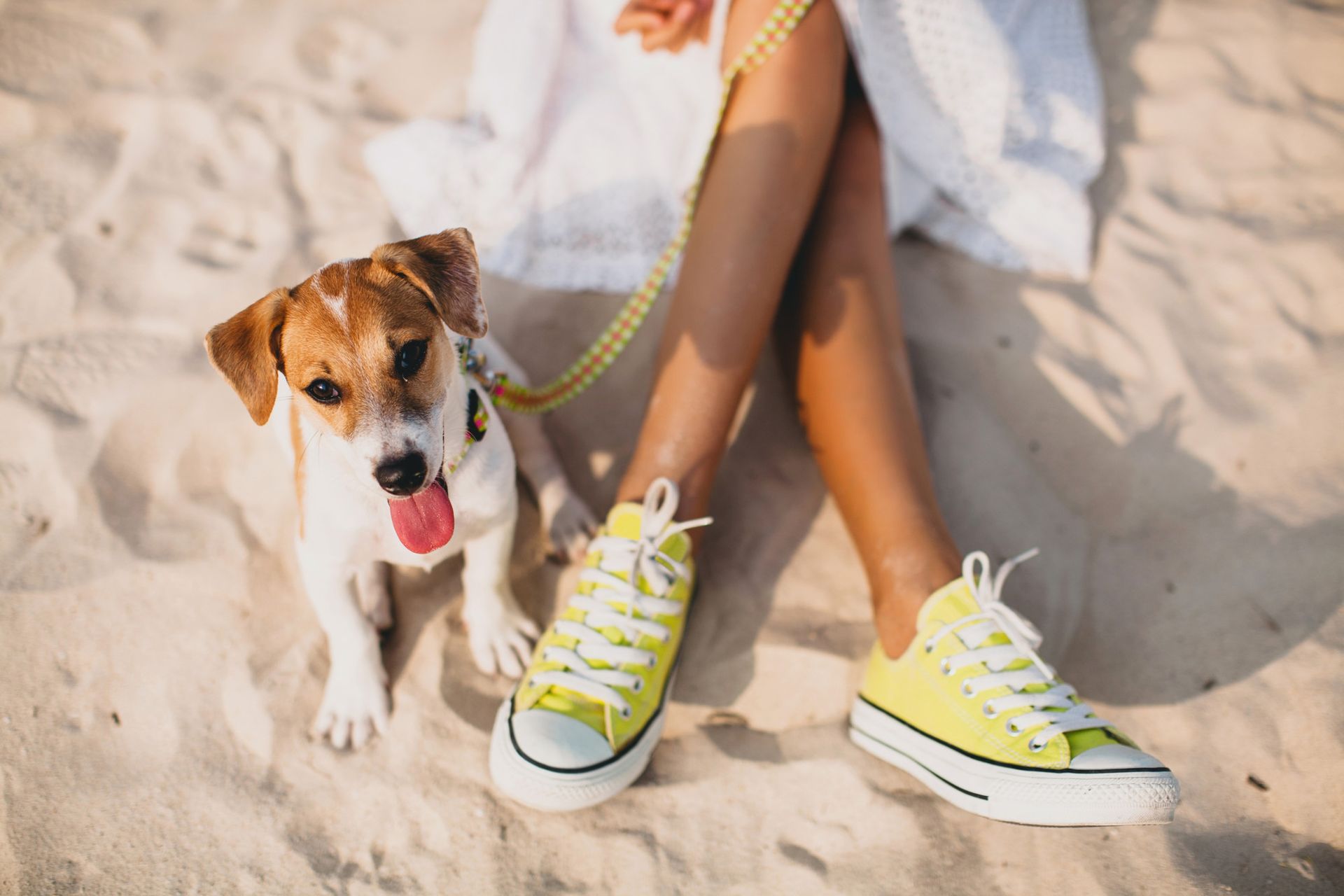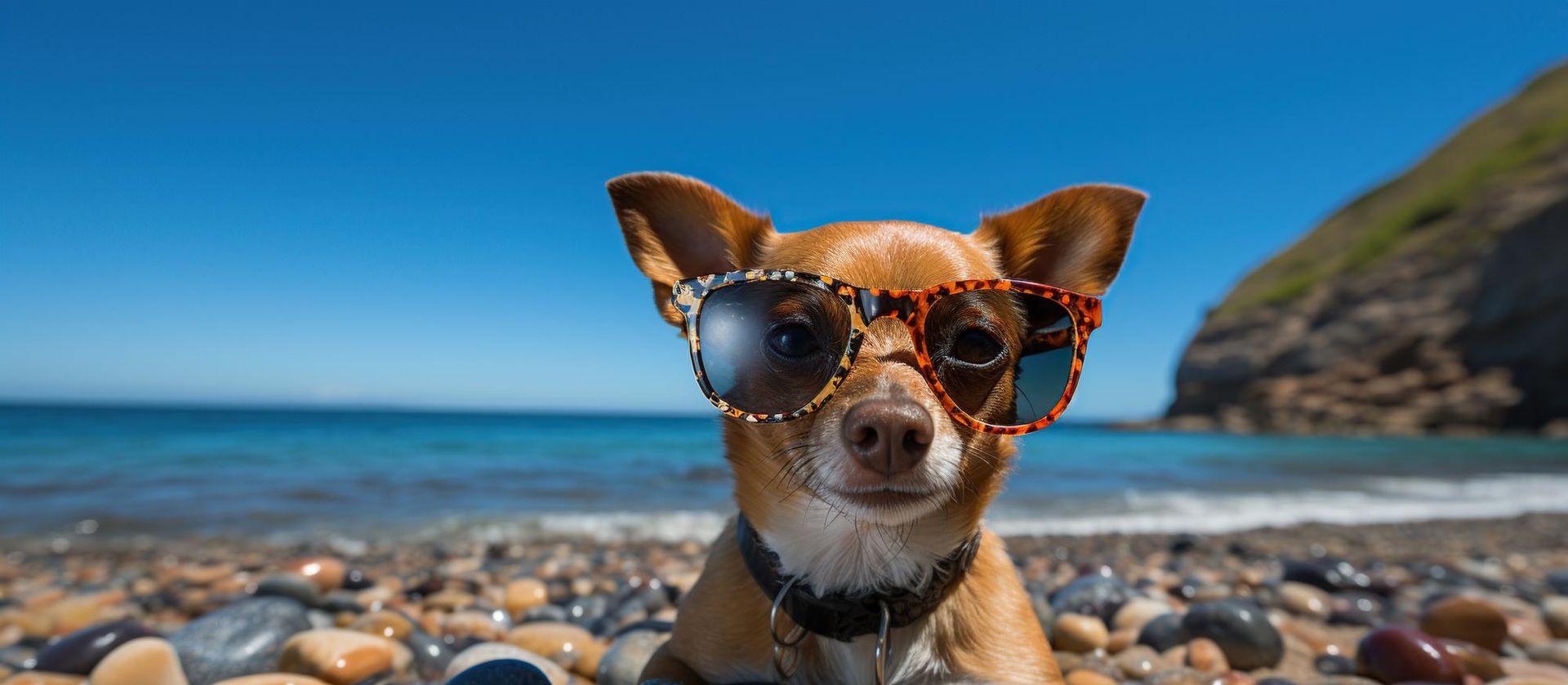Summer offers a time for outdoor activities and fun in the sun, but it also brings specific challenges for our furry companions. Their paws and coats, vital for their well-being, require extra care during hot weather. This blog delves into how summer heat affects these key areas and provides practical do's and don'ts for responsible pet ownership during this season.
Understanding Paw Sensitivity
A dog or cat's paw pads are made of thick, keratinized skin, providing cushioning, traction, and insulation. However, they are not impervious to heat. In fact, they are quite sensitive to extreme temperatures. Imagine walking barefoot on scorching asphalt – that's what your pet experiences. Surfaces like asphalt, concrete, sand, and even artificial turf can heat up dramatically in direct sunlight, reaching temperatures that can cause severe burns and blisters on your pet's paws.
How hot is too hot? If you can't comfortably hold your hand on the surface for more than five seconds, it's too hot for your pet's paws. This simple test can help prevent painful injuries.
The Coat's Role in Thermoregulation
A pet's coat serves as insulation, protecting them from both heat and cold. While it might seem counterintuitive to avoid shaving your long-haired dog in the summer, their coat actually helps regulate their body temperature. The layers of fur trap air, creating a barrier against the sun's rays and preventing overheating. Shaving a dog's coat can remove this protective layer, making them more susceptible to sunburn, heatstroke, and skin cancer.
However, regular grooming is essential. Matted fur restricts airflow, trapping heat and moisture against the skin. Brushing removes loose fur and debris, allowing for better ventilation and helping your pet stay cooler.

Summer Paw Care: Do's and Don'ts
Do's:
- Walk your pet during cooler hours: Opt for early morning or late evening walks when the pavement is cooler.
- Test the pavement: Use the five-second rule to check the temperature before walking your pet.
- Use paw protection: Consider dog booties or paw wax to shield your pet's paws from hot surfaces.
- Walk on grass or shaded areas: When possible, stick to grassy or shaded areas where the ground is cooler.
- Keep paws clean and moisturized: Regularly clean your pet's paws and apply a paw balm to prevent cracking and dryness.
- Provide access to water: Ensure your pet has access to fresh, cool water at all times.
Don'ts:
- Walk your pet on hot asphalt or concrete: Avoid walking your pet on hot surfaces during the hottest part of the day.
- Leave your pet unattended in a parked car: Temperatures inside a parked car can rise rapidly, even on a mildly warm day, leading to heatstroke and death.
- Overexercise your pet: Reduce the intensity and duration of exercise during hot weather.
- Ignore signs of discomfort: Watch for signs of paw discomfort, such as limping, licking paws excessively, or reluctance to walk.
- Assume all surfaces are safe: Be mindful of sand, artificial turf, and other surfaces that can heat up quickly.
- Forget about paw hygiene: Neglecting paw cleaning can lead to infections and other issues.
Summer Coat Care: Do's and Don'ts
Do's:
- Brush your pet regularly: Frequent brushing removes loose fur and prevents matting.
- Provide shade: Ensure your pet has access to shade when outdoors.
- Keep your pet indoors during peak heat: Limit outdoor activities during the hottest part of the day.
- Offer cooling mats or vests: Consider using cooling mats or vests to help your pet stay cool.
- Ensure proper hydration: Provide plenty of fresh, cool water.
Don'ts:
- Shave your pet's coat (unless medically necessary): Shaving can remove the protective insulation and increase the risk of sunburn.
- Leave your pet in direct sunlight: Prolonged exposure to direct sunlight can lead to overheating and sunburn.
- Use human sunscreen on your pet: Human sunscreen can be toxic to pets. Use pet-specific sunscreen if needed.
- Ignore signs of overheating: Watch for signs of heatstroke, such as excessive panting, drooling, vomiting, and lethargy.
Recognizing Heatstroke
Heatstroke is a life-threatening condition that can occur when a pet's body temperature rises to dangerous levels. Symptoms of heatstroke include:
- Excessive panting or difficulty breathing
- Drooling
- Vomiting or diarrhea
- Lethargy or weakness
- Bright red gums
- Seizures
- Collapse
If you suspect your pet has heatstroke, take immediate action:
- Move your pet to a cool, shaded area.
- Offer cool (not cold) water to drink.
- Apply cool, wet towels to their body, especially the groin, armpits, and neck.
- Seek immediate veterinary attention.
Prioritizing Your Pet's Well-being
By understanding the impact of summer heat on your pet's paws and coat, and by following these simple do's and don'ts, you can help ensure their safety and comfort during the warmer months. Remember, responsible pet ownership includes being mindful of their needs and taking proactive steps to protect them from the dangers of heatstroke and other summer-related health issues. When in doubt, consult with your veterinarian for personalized advice and recommendations.
